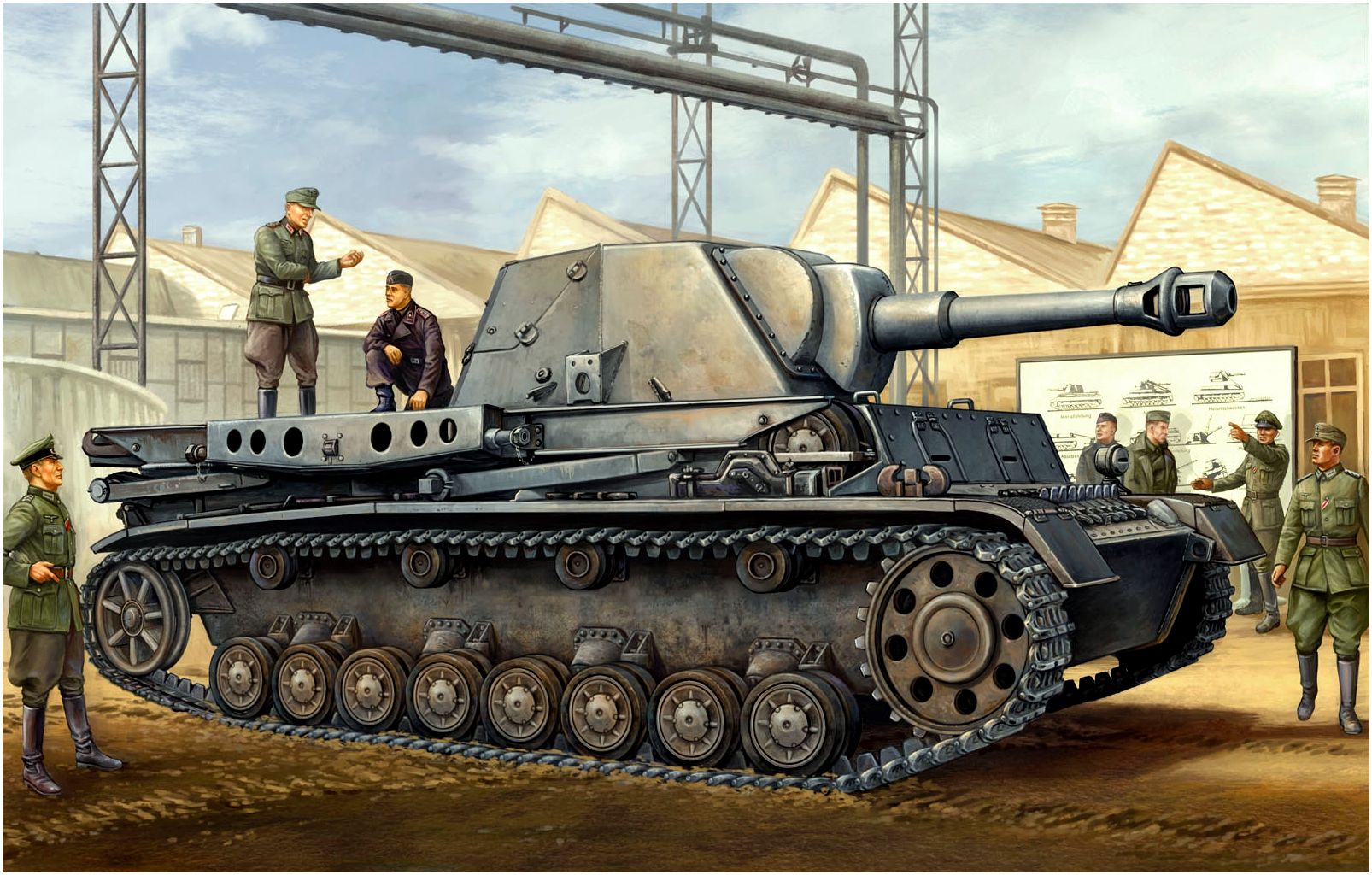
The development of SP artillery had been envisioned as early as 1934, but by 1935 attention had turned to a tank with a 105mm howitzer. Thus, it was not until early 1940 that approval was given for development of a true SP artillery piece. In January 1942 Krupp showed a prototype of a 105mm howitzer on the PzKw IV chassis and in July a contract for 200 was placed. This was to be an interim design, as the Automotive Design Office really wanted a weapon with 360° traverse and capable of dismounting tor use separate from the carrier vehicle. This resulted in the “Heuschrecke 10” vehicle with a light howitzer in a dismountable turret. In the meantime, however, it had become clear that the interim design was both heavy and expensive and Rheinmetall and Alkett were called upon to. mount the 105mm howitzer on the chassis of the PzKw II light tank. Using experience previously acquired in mounting the 15cm infantry gun and the 75mm Pak on this vehicle, they demonstrated the vehicle in July 1942. The contract for the PzKw IV SP vehicle was thereupon cancelled. In fact, the Heuschrecke 10 never entered series production, and the Rheinmetall/AJkett SdKfz 124 “Wespe” soldiered on to the end of the war.
10.5cm leFH18/1(Sf) auf Geschutzwagen IVb (Sd Kfz 165/1)
From 1941, various proposals had been made for a self-propelled version of the 10.5cm leFH18. Krupp designed a special vehicle based on the Pz Kpfw IV components, using a smaller engine, hull and three-station bogies per side, with larger road wheels. Krupp’s Pz Sf IVb had a partly-traversing turret which was open-topped. A Test Series of eight units was ordered. Production vehicles were to have the Maybach HL90 which gave 320PS. Production was cancelled because, on the subject of self-propelled artillery, official thinking was tending towards carriages capable of all-round traverse, with ability to dismount the weapon.
The Sd.Kfz. 165/1 was similar in design to the Heuschrecke, but did not have the chassis-mounted launching mechanism to remove the turret. After a series of tests, the Sd.Kfz. 165/1 was accepted by the Wehrmacht in early January 1940. In 1941, Krupp built prototype vehicles armed with the 105 mm leichte Feldhaubitze 18/1 L/28 (light field howitzer 18/1 L/28, abbreviated leFH 18/1 L/28) cannon based on a modified Panzer IV chassis. The prototypes were fitted with a smaller six-cylinder Maybach HL66P engine, which had a power capacity of 188 hp (140 kW). Although 200 vehicles were ordered, Krupp completed only 10 prototypes in the final four months of 1942.
Alkett now proposed an interim solution of mounting the 10.5cm leFH18 on the Pz Kpfw II chassis, and this was accepted as the Wespe (wasp). In a final attempt to have their special GW IVb chassis utilized, Krupp offered the design as the basis for the Jagdpanzer IV, designated Panzerjager IVb (E39) mit 7.5cm PaK39 L/48, but the normal Pz Kpfw IV chassis was again utilized.
Was the Heuschrecke 10 designed to pick up the turret and replace it on the chassis?